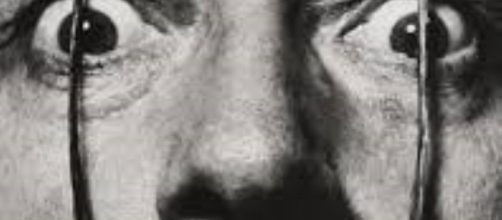Salvador Dali, who died in 1989, is undergoing a paternity test. Genetic material has been extracted from the remains unearthed from a grave in his hometown of Figueres to prove a claim from Pilar Abel, a 61-year-old Spanish tarot reader that she is his daughter. If true, she would be his only heir.
Daddy Dali
Abel contends that when she was eight years old, her grandmother revealed that her mother, a maid in the village of Port Lligat where Dali and his wife Gala lived, was the artist’s “clandestine love” and that she was his daughter and entitled to a portion of his large estate.
Mission Impossible
This claim is suspect from the outset. Dali, by his own admission, was impotent. As Ian Gibson, one of the artist’s’ biographers, told the BBC, “Dali always boasted, ‘You’ve got to be impotent to be a great painter.” (Tell that to Johannes Vermeer, who fathered 15 children). Gibson also said that Dali’s friend Carlos Lozano told him that the artist couldn’t bear to be touched and therefore was unable to have sexual relations. Reportedly, he also had a fear of castration and female genitalia.
A whopping turn-off
Another Dali biographer, Merle Secrest, uncovered the reason for the artist’s sexual dysfunction. His father taught him the birds and the bees by leaving a picture book on venereal disease open on the family piano.
As Dali told an interviewer “I was terrified.” He was so upset that he couldn’t speak of the incident until middle aged. He was 62 when he is supposed to have had the “clandestine love.”
Excuses, excuses
Given that the record books show no children for Dali, one may well wonder why archaeologists felt justified to prove he did.
Sad to say this isn’t the first time that this group has disinterred a grave to discover what art history already knows. They recently unburied Lisa Gherardini, the woman pictured in Leonardo Da Vinci’s portrait “Mona Lisa.” And while there’s a reason for exhuming Dali, albeit covetous, the rationale for disturbing Mona’s place of rest - to prove that the woman in the picture is the one in the grave – is without justification.
(More about that in a moment). Yet, Stefania Romano, speaking for the excavation, apparently unaware of Mona’s history, explained the mission as if it made sense: “We want to find the skull and make a portrait of the Mona Lisa" for comparison. Likely that’s the plan for also exhuming Da Vinci’s skull: to prove the hypothesis that Mona’s image is the artist’s self-portrait.
According to the record
Mona’s identity was long established back in 1550 by the world;s first historian Giorgio Vasari who wrote: “For Francesco del Giaconda, Leonardo undertook to execute a portrait of his wife, Mona Lisa. He worked on this painting for four years, and then left it still unfinished, and today (his time) it is in the possession of the King of France” (and ultimately in the Louvre).
The identity of the woman in the painting cannot be made more clear than that. You don’t have to dig up a skull and reconstruct it to know that. Archaeologists need to crack a history book now and again.


